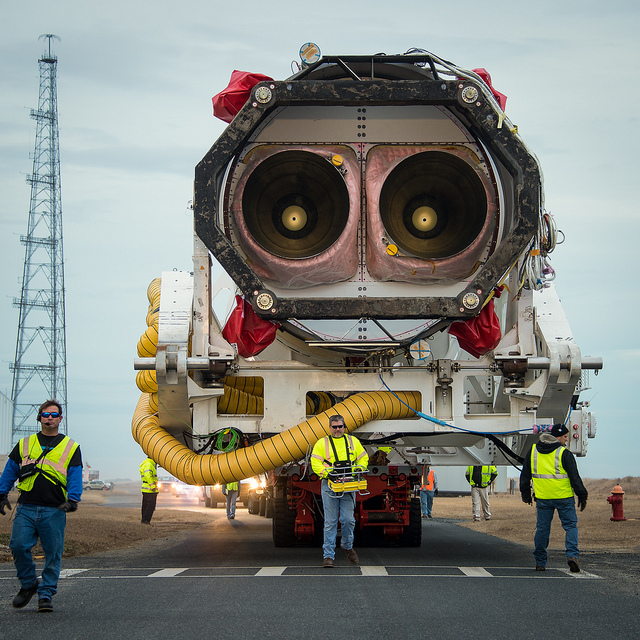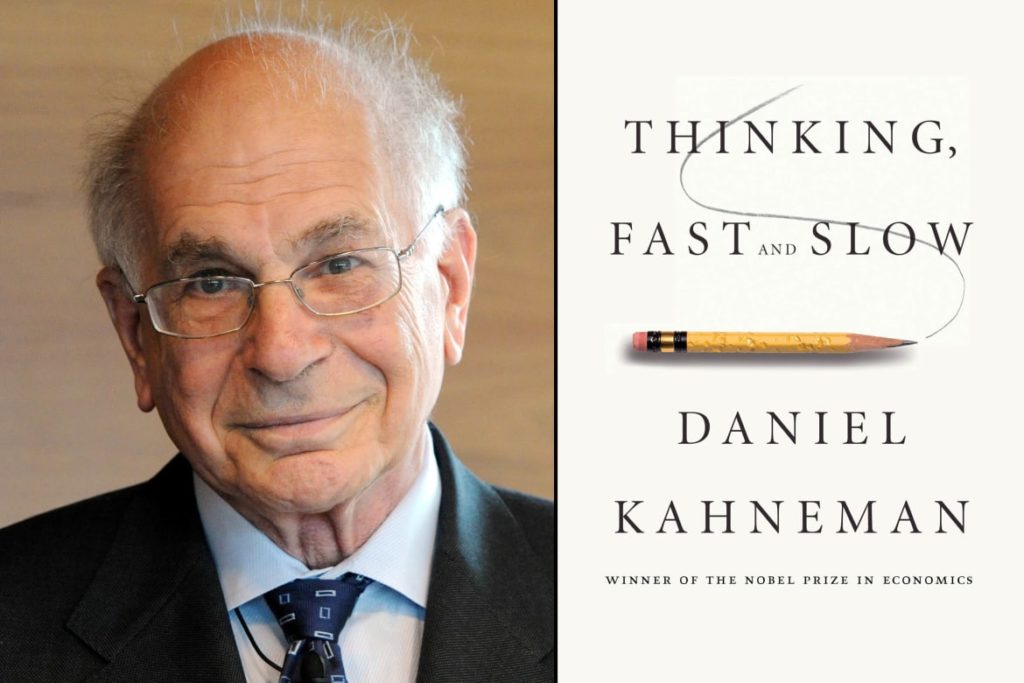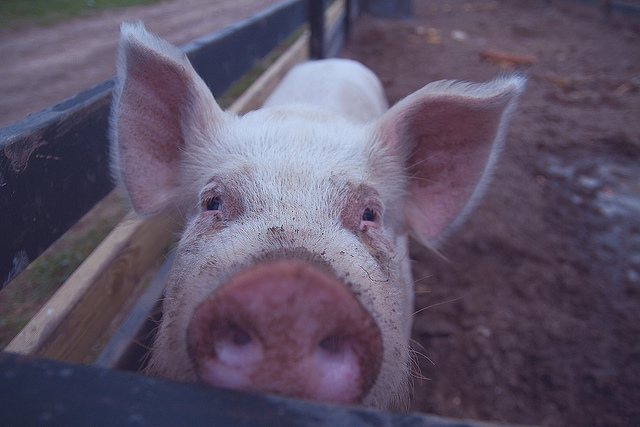Archive for the ‘How To’ Category
Don’t trust your gut, run the test.
 At first glance, it seems easy to run a good test, but nothing can be further from the truth.
At first glance, it seems easy to run a good test, but nothing can be further from the truth.
The first step is to define the idea/concept you want to validate or invalidate. The best way is to complete one of these two sentences: I want to learn that [type your idea here] is true. Or, I want to learn that [enter your idea here] is false.
Next, ask yourself this question: What information do I need to validate (or invalidate) [type your idea here]? Write down the information you need. In the engineering domain, this is straightforward: I need the temperature of this, the pressure of that, the force generated on part xyz or the time (in seconds) before the system catches fire. But for people-related ideas, things aren’t so straightforward. Some things you may want to know are: how much will you pay for this new thing, how many will you buy, on a scale of 1 to 5 how much do you like it?
Now the tough part – how will you judge pass or fail? What is the maximum acceptable temperature? What is the minimum pressure? What is the maximum force that can be tolerated? How many seconds must the system survive before catching fire? And for people: What is the minimum price that can support a viable business? How many must they buy before the company can prosper? And if they like it at level 3, it’s a go. And here’s the most importance sentence of the entire post:
The decision criteria must be defined BEFORE running the test.
If you wait to define the go/no-go criteria until after you run the test and review the data, you’ll adjust the decision criteria so you make the decision you wanted to make before running the test. If you’re not going to define the decision criteria before running the test, don’t bother running the test and follow your gut. Your decision will be a bad one, but at least you’ll save the time and money associated with the test.
And before running the test, define the test protocol. Think recipe in a cookbook: a pinch of this, a quart of that, mix it together and bake at 350 degrees Fahrenheit for 40 minutes. The best protocols are simple and clear and result in the same sequence of events regardless of who runs the test. And make sure the measurement method is part of the protocol – use this thermocouple, use that pressure gauge, use the script to ask the questions about price and the number they’d buy.
And even with all this rigor, good judgement is still part of the equation. But the judgment is limited to questions like: did we follow the protocol? Did the measurement system function properly? Do the initial assumptions still hold? Did anything change since we defined the learning objective and defined the test protocol?
To create formal learning objectives, to write well-defined test protocols and to formalize the decision criteria before running the test require rigor, discipline, time and money. But, because the cost of making a bad decision is so high, the cost of running good tests is a bargain at twice the price.
Image credit – NASA Goddard Flight Center
It’s time to stretch yourself.
 If the work doesn’t stretch you, choose new work. Don’t go overboard and make all your work stretch you and don’t choose work that will break you. There’s a balance point somewhere between 0% and 100% stretch and that balance point is different for everyone and it changes over time. Point is, seek your balance point.
If the work doesn’t stretch you, choose new work. Don’t go overboard and make all your work stretch you and don’t choose work that will break you. There’s a balance point somewhere between 0% and 100% stretch and that balance point is different for everyone and it changes over time. Point is, seek your balance point.
To find the right balance point, start with an assessment of your stretch level. List the number of projects you have and sum the number of major deliverables you’ve got to deliver. If you have more than three projects, you have too many. And if you think you take on more than three because you’re superhuman, you’re wrong. The data is clear – multitasking is a fallacy. If you have four projects you have too many. And it’s the same with three, but you’d think I was crazy if I suggested you limit your projects to two. The right balance point starts with reducing the number of projects you work on.
Now that you eliminated four or five projects and narrowed the portfolio down to the vital two or three, it’s time to list your major deliverables. Take a piece of paper and write them in a column down the left side of the page. And in a column next to the projects, categorize each of them as: -1 (done it before), 0 (done something similar), 1 (new to me), 2 (new to team), 3 (new to company), 5 (new to industry), 11 (new to world).
For the -1s, teach an entry level person how to do it and make sure they do it well. For the 0s, find someone who deserves a growth opportunity and let them have the work. And check in with them to make sure they do a good job. The idea is to free yourself for the stretch work.
For the 1s, find the best person in the team who has done it before and ask them how to do it. Then, do as they suggest but build on their work and take it to the next level.
For the 2s, find the best person in the company who has done it before and ask them how to do it. Then, build on their approach and make it your own.
For the 3s, do your research and find out who in your industry has done it before. Figure out how they did it and improve on their work.
For the 5s, do your research and figure out who has done similar work in another industry. Adapt their work to your application and twist it into something magical.
And for the 11s, they’re a special project category that live in rarified air and deserve a separate blog post of their own.
Start with where you are – evaluate your existing deliverables, cull them to a reasonable workload and assess your level of stretch. And, where it makes sense, stop doing work you’ve done before and start doing work you haven’t done yet. Stretch yourself, but be reasonable. It’s better to take one bite and swallow than take three and choke.
Image credit – filtran
The Evolution of New Ideas
 Before there is something new to see, there is just a good idea worthy of a prototype. And before there can be good ideas there are a whole flock of bad ones. And until you have enough self confidence to have bad ideas, there is only the status quo. Creating something from nothing is difficult.
Before there is something new to see, there is just a good idea worthy of a prototype. And before there can be good ideas there are a whole flock of bad ones. And until you have enough self confidence to have bad ideas, there is only the status quo. Creating something from nothing is difficult.
New things are new because they are different than the status quo. And if the status quo is one thing, it’s ruthless in desire to squelch the competition. In that way, new ideas will get trampled simply based on their newness. But also in that way, if your idea gets trampled it’s because the status quo noticed it and was threatened by it. Don’t look at the trampling as a bad sign, look at it as a sign you are on the right track. With new ideas there’s no such thing as bad publicity.
The eureka moment is a lie. New ideas reveal themselves slowly, even to the person with the idea. They start as an old problem or, better yet, as a successful yet tired solution. The new idea takes its first form when frustration overcomes intellectual inertia a strange sketch emerges on the whiteboard. It’s not yet a good idea, rather it’s something that doesn’t make sense or doesn’t quite fit.
The idea can mull around as a precursor for quite a while. Sometimes the idea makes an evolutionary jump in a direction that’s not quite right only to slither back to it’s unfertilized state. But as the environment changes around it, the idea jumps on the back of the new context with the hope of evolving itself into something intriguing. Sometimes it jumps the divide and sometimes it slithers back to a lower energy state. All this happens without conscious knowledge of the inventor.
It’s only after several mutations does the idea find enough strength to make its way into a prototype. And now as a prototype, repeats the whole process of seeking out evolutionary paths with the hope of evolving into a product or service that provides customer value. And again, it climbs and scratches up the evolutionary ladder to its most viable embodiment.
Creating something new from scratch is difficult. But, you are not alone. New ideas have a life force of their own and they want to come into being. Believe in yourself and believe in your ideas. Not every idea will be successful, but the only way to guarantee failure is to block yourself from nurturing ideas that threaten the status quo.
Image credit – lost places
A Barometer for Uncertainty
 Novelty, or newness, can be a great way to assess the status of things. The level of novelty is a barometer for the level of uncertainty and unpredictability. If you haven’t done it before, it’s novel and you should expect the work to be uncertain and unpredictable. If you’ve done it before, it’s not novel and you should expect the work to go as it did last time. But like the barometer that measures a range of atmospheric pressures and gives an indication of the weather over the next hours, novelty ranges from high to low in small increments and so does the associated weather conditions.
Novelty, or newness, can be a great way to assess the status of things. The level of novelty is a barometer for the level of uncertainty and unpredictability. If you haven’t done it before, it’s novel and you should expect the work to be uncertain and unpredictable. If you’ve done it before, it’s not novel and you should expect the work to go as it did last time. But like the barometer that measures a range of atmospheric pressures and gives an indication of the weather over the next hours, novelty ranges from high to low in small increments and so does the associated weather conditions.
Barometers have a standard scale that measures pressure. When the summer air is clear and there are no clouds, the atmospheric pressure is high and on the rise and you should put on sun screen. When it’s hurricane season and super-low system approaches, the drops to the floor and you should evacuate. The nice thing about barometers is they are objective. On all continents, they can objectively measure the pressure and display it. No judgement, just read the scale. And regardless of the level of pressure and the number of times they measure it, the needle matches the pressure. No Kentucky windage. But novelty isn’t like that.
The only way to predict how things will go based on the level of novelty is to use judgement. There is no universal scale for novelty that works on all projects and all continents. Evaluating the level of novelty and predicting how the projects will go requires good judgement. And the only way to develop good judgment is to use bad judgment until it gets better.
All novelty isn’t created equal. And that’s the trouble. Some novelty has a big impact on the weather and some doesn’t. The trick is to know the difference. And how to tell the difference? If when you make a change in one part of the system (add novelty) and the novelty causes a big change in the function or operation of the system, that novelty is important. The system is telling you to use a light hand on the tiller. If the novelty doesn’t make much difference in system performance, drive on. The trick is to test early and often – simple tests that give thumbs-up or thumbs-down results. And if you try to run a test and you can’t get the test to run at all, there’s a hurricane is on the horizon.
When the work is new, you don’t really know which novelty will bite you. But there’s one rule: all novelty will bite you until proven otherwise. Make a list of the novel elements of the and test them crudely and quickly.
Allocating resources as if people and planet mattered.
 Business is about allocating resources to achieve business objectives. And for that, the best place to start is to define the business objectives.
Business is about allocating resources to achieve business objectives. And for that, the best place to start is to define the business objectives.
First – what is the timeframe of the business objectives? Well, there are three – short, medium and long. Short is about making payroll, shipping this month’s orders and meeting this year’s sales objectives. Long is about the existence of the company over the next decade and happiness of the people that do the work along the way. And medium – the toughest – is in-between. It’s neither short nor long but bound by both.
Second – define business objectives within the three types: people, planet and profit.
People. Short term: pay them so they can eat, pay the mortgage and fund their retirement, provide healthcare, provide a safe workplace, give them work that fits their strengths and give them time to improve their community. Medium: pay them so they can provide for their family and fund their retirement, provide healthcare, provide a safer workplace, give them work that requires them to grow their strengths and give them time to become community leaders. Long: pay them so they can pay for their kids’ college and know they can safely retire, provide the safest workplace, let them choose their own work, and give them time to grow the next community leaders. And make it easy.
Planet. Short term: teach Life Cycle Assessment, Buddhist Economics and TRIZ and create business metrics for them to flourish. Medium: move from global sourcing to local sourcing, move to local production, move from business models based on non-renewable resources to renewable resources. Long: create new business models that are resource neutral. Longer: create business models that generate excess resources. Longest: teach others.
Profit. Short, medium and long – focus on people and planet and the profits will come. But also focus on creating new value for new customers.
For business objectives, here’s the trick on timeframe – always work short term, always work long term and prioritize medium term.
And for the three types of business objectives, focus on people, planet and creating new value for new customers. Profits are a result.
Image credit – magnetismus
Additive Manufacturing’s Holy Grail
 The holy grail of Additive Manufacturing (AM) is high volume manufacturing. And the reason is profit. Here’s the governing equation:
The holy grail of Additive Manufacturing (AM) is high volume manufacturing. And the reason is profit. Here’s the governing equation:
(Price – Cost) x Volume = Profit
The idea is to sell products for more than the cost to make them and sell a lot of them. It’s an intoxicatingly simple proposition. And as long as you look only at the volume – the number of products sold per year – life is good. Just sell more and profits increase. But for a couple reasons, it’s not that simple. First, volume is a result. Customers buy products only when those products deliver goodness at a reasonable price. And second, volume delivers profit only when the cost is less than the price. And there’s the rub with AM.
Here’s a rule – as volume increases, the cost of AM is increasingly higher than traditional manufacturing. This is doubly bad news for AM. Not only is AM more expensive, its profit disadvantage is particularly troubling at high volumes. Here’s another rule – if you’re looking to AM to reduce the cost of a part, look elsewhere. AM is not a bottom-feeder technology.
If you want to create profits with AM, use it to increase price. Use it to develop products that do more and sell for more. The magic of AM is that it can create novel shapes that cannot be made with traditional technologies. And these novel shapes can create products with increased function that demand a higher price. For example, AM can create parts with internal features like serpentine cooling channels with fine-scale turbulators to remove more heat and enable smaller products or products that weigh less. Lighter automobiles get better fuel mileage and customers will pay more. And parts that reduce automobile weight are more valuable. And real estate under the hood is at a premium, and a smaller part creates room for other parts (more function) or frees up design space for new styling, both of which demand a higher price.
Now, back to cost. There’s one exception to cost rule. AM can reduce total product cost if it is used to eliminate high cost parts or consolidate multiple parts into a single AM part. This is difficult to do, but it can be done. But it takes some non-trivial cost analysis to make the case. And, because the technology is relatively new, there’s some aversion to adopting AM. An AM conversion can require a lot of testing and a significant cost reduction to take the risk and make the change.
To win with AM, think more function AND consolidation. More (or new) function to support a higher price (and increase volume) and reduced cost to increase profit per part. Don’t do one or the other. Do both. That’s what GE did with its AM fuel nozzle in their new aircraft engines. They combined 20 parts into a single unit which weighed 25 percent less than a traditional nozzle and was more than five times as durable. And it reduced fuel consumption (more function, higher price).
AM is well-established in prototyping and becoming more established in low-volume manufacturing. The holy grail for AM – high volume manufacturing – will become a broad reality as engineers learn how to design products to take advantage of AM’s unique ability to make previously un-makeable shapes and learn to design for radical part consolidation.
More function AND radical part consolidation. Do both.
Image credit – Les Haines
Make It Easy
 When you push, you make it easy for people resist. When you break trail, you make it easy for them to follow.
When you push, you make it easy for people resist. When you break trail, you make it easy for them to follow.
Efficiency is overrated, especially when it interferes with effectiveness. Make it easy for effectiveness to carry the day.
You can push people off a cliff or build them a bridge to the other side. Hint – the bridge makes it easy.
Even new work is easy when people have their own reasons for doing it.
Making things easier is not easy.
Don’t tell people what to do. Make it easy for them to use their good judgement.
Set the wrong causes and conditions and creativity screeches to a halt. Set the right ones and it flows easily. Creativity is a result.
Don’t demand that people pull harder, make it easier for them to pull in the same direction.
Activity is easy to demonstrate and progress isn’t. Figure out how to make progress easier to demonstrate.
The only way to make things easier is to try to make them easier.
Image credit – Richard Hurd
The one good way to change behavior.
 There’s one good way to change behavior. But don’t take my word for it, take Daniel Kahneman’s, psychologist who was awarded the Nobel Prize in Economic Sciences. In Freakonomics Radio’s podcast How to Launch a Behavioral Change Revolution, Kahneman explains how to achieve change in behavior. His explanation is short [30:35 – 35:21] and good.
There’s one good way to change behavior. But don’t take my word for it, take Daniel Kahneman’s, psychologist who was awarded the Nobel Prize in Economic Sciences. In Freakonomics Radio’s podcast How to Launch a Behavioral Change Revolution, Kahneman explains how to achieve change in behavior. His explanation is short [30:35 – 35:21] and good.
Kahneman describes a theory of Kurt Lewin, his academic grandfather, where behavior is an equilibrium, a balance between driving forces that push for change and restraining forces that hold back change. Kahneman goes on to describe Lewin’s insight. “Lewin’s insight was that if you want to achieve change in behavior, there is one good way to do it and one bad way. The good way is by diminishing restraining forces, not by increasing the driving forces. That turns out to be profoundly non-intuitive.”
Usually, when we want someone to change, we push them in the direction we want them to go. Kahneman says this approach is natural, but ineffective. He offers a different approach – “Instead of asking how can I get him or her to do it, it starts with a question of why isn’t she doing it already? Go one-by-one, systematically, and you ask ‘What can I do to make it easier for that person to move?’”
What would happen if instead of pushing someone to change, you understand what’s in the way and eliminated the restraining force? I don’t know, but I’m going to give it a try.
Kahneman goes on to describe how to make things easier for a person to move. He says “…the way to make things easier is almost always by controlling the individual’s environment…by just making it easier.” Sounds pretty simple – change people’s environment to make it easier for them to move toward the desired behavior. But, we don’t do it that way.
Kahneman gives more detail. “Are there incentives that work against it? Let’s change the incentives.” And then he gives a simple example. “I want to influence B, but there is A in the background and it’s A who is a restraining force on B, let’s work on A, not on B.”
I urge you to listen to the short segment to hear Kahneman’s words for yourself. His ideas really hit home when you hear them from him.
How to wallow in the mud of uncertainty.
 Creativity and innovation are dominated by uncertainty. And in the domain of uncertainty, not only are the solutions unknown, the problems are unknown. And yet, we still try to use the tried-and-true toolbox of certainty even after it’s abundantly clear those wrenches don’t fit.
Creativity and innovation are dominated by uncertainty. And in the domain of uncertainty, not only are the solutions unknown, the problems are unknown. And yet, we still try to use the tried-and-true toolbox of certainty even after it’s abundantly clear those wrenches don’t fit.
When wallowing in the mud of uncertainty and company leaders ask, “When will you be done?”, the only real answer is a description of the next thing you’ll try to learn. “We will learn if Step 1 is possible.” And then the predicted response, “Well, when will you be done with that?” The only valid response is, “It depends.” Though truthful, this goes over like a lead balloon. And the dialog continues – “Okay, then, what is Step 2?” The unpalatable answer, “It depends. If Step 1 is successful, we’ll move onto Step 2, but if Step 1 is unsuccessful, we’ll step back and regroup.” This, too, though truthful, is unsatisfactory.
When doing creative work, there’s immense pressure to be done on time. But, that pressure is inappropriate. Yes, there can be pressure to learn quickly and effectively, but the expectation to be done within an arbitrary timeline is ludicrous. Managers don’t know this, but when they demand a completion date for a task that has never been done before, the people doing the creative work know the manager doesn’t know what they’re doing. They won’t tell the manager what they think, but they definitely think it. And when pushed to give a completion date, they’ll give one, knowing full well the predicted date is just as arbitrary as the manager’s desired timeline.
But learning objectives can create common ground. Starting with “We want to learn if…”, learning objectives define what the project team must learn. Though there’s no agreement on when things will be completed, everyone can agree on the learning objectives. And with clearly defined learning objectives and measurable definitions of success, the project can move forward with consensus. There is still consternation over the lack of hard deadlines for the learning objectives, but there is agreement on the sequence of events, tests protocols or analyses that will be carried out to learn what must be learned.
Two rules to live by: If you know when you’ll be done, you’re not doing innovation. And if no one is surprised by the solution, you’re not doing creative work.
Image credit – Michael Carian
To improve productivity, it’s time to set limits.
 The race for productivity is on. And to take productivity to the next level, set limits.
The race for productivity is on. And to take productivity to the next level, set limits.
To reduce the time wasted by email, limit the number of emails a person can send to ten emails per day. Also, eliminate the cc function. If you send a single email to ten people, you’re done for the day. This will radically reduce the time spent writing emails and reduce distraction as fewer emails will arrive. But most importantly, it will help people figure out which information is most important to communicate and create a natural distillation of information. Lastly, limit the number of word in an email to 100. This will shorten the amount of time to read emails and further increase the density of communications.
If that doesn’t eliminate enough waste, limit the number of emails a person can read to ten emails per day. Provide the subject of the email and the sender, but no preview. Use the subject and sender to decide which emails to read. And, yes, responding to an email counts against your daily sending quota of ten. The result is further distillation of communication. People will take more time to decide which emails to read, but they’ll become more productive through use of their good judgement.
Limit the number of meetings people can attend to two per day and cap the maximum meeting length to 30 minutes. The attendees can use the meeting agenda, meeting deliverables and decisions made at the meeting to decide which meetings to attend. This will cause the meeting organizers to write tight, compelling agendas and make decisions at meetings. Wasteful meetings will go away and productivity will increase.
To reduce waiting, limit the number of projects a person can work on to a single project. Set the limit to one. That will force people to chase the information they need instead of waiting. And if they can’t get what they need, they must wait. But they must wait conspicuously so it’s clear to leaders that their people don’t have what they need to get the project done. The conspicuous waiting will help the leaders recognize the problem and take action. There’s a huge productivity gain by preventing people from working on things just to look busy.
Though harsh, these limits won’t break the system. But they will have a magical influence on productivity. I’m not sure ten is the right number of emails or two is the right number of meetings, but you get the idea – set limits. And it’s certainly possible to code these limits into your email system and meeting planning system.
Not only will productivity improve, happiness will improve because people will waste less time and get to use their judgement.
Everyone knows the systems are broken. Why not give people the limits they need and make the productivity improvements they crave?
Image credit – XoMEoX
Innovate like a professional with the Discovery Burst Event.
 Recreational athletes train because they enjoy the activity and they compete so they can tell themselves (and their friends) stories about the race. Their training routines are discretionary and their finish times are all about bragging rights. Professional athletes train because it’s their job. Their training is unpleasant, stressful and ritualistic. And it’s not optional. And their performance defines their livelihood. A slow finish time negatively impacts their career. With innovation, you have a choice – do you want to do it like a recreational athlete or like a professional? Do you want to do it like it’s discretionary or like your livelihood depends on it?
Recreational athletes train because they enjoy the activity and they compete so they can tell themselves (and their friends) stories about the race. Their training routines are discretionary and their finish times are all about bragging rights. Professional athletes train because it’s their job. Their training is unpleasant, stressful and ritualistic. And it’s not optional. And their performance defines their livelihood. A slow finish time negatively impacts their career. With innovation, you have a choice – do you want to do it like a recreational athlete or like a professional? Do you want to do it like it’s discretionary or like your livelihood depends on it?
Like with the professional athlete, with innovation what worked last time is no longer good enough. Innovation demands we perform outside our comfort zone.
Goals/Objectives are the key to performing out of our comfort zone. And to bust through intellectual inertia, one of the most common business objectives is a goal to grow revenue. “Grow the top line” is the motto of the professional innovator.
To deliver on performance goals, coaches give Strategic Guidance to the professional athlete, and it’s the same for company leaders – it’s their responsibility to guide the innovation approach. The innovation teams must know if their work should focus on a new business model, a new service or a new product. And to increase the bang for the buck, an Industry-First approach is recommended, where creation of new customer value is focused within a single industry. This narrows the scope and tightens up the work. The idea is to solve a problem for an industry and sell to the whole of it. And to tighten things more, a Flagship Customer is defined with whom a direct partnership can be developed. Two attributes of a Flagship Customer – big enough to create significant sales growth and powerful enough to pull the industry in its wake.
It’s the responsibility of the sales team to identify the Flagship Customer and broker the first meeting. At the meeting, a Customer-Forward approach is proposed, where a diverse team visits the customer and dives into the details of their Goals/Objectives, their work and their problems. The objective is to discover new customer outcomes and create a plan to satisfy them. The Discovery Burst Event (DBE) is the mechanism to do the work It’s a week-long event where marketing, sales, engineering, manufacturing and technical services perform structured interviews to get to the root of the customer’s problems AND, in a Go-To-The-Work way, walk their processes and use their eyeballs to discover solutions to problems the customer didn’t know they had. The DBE culminates with a report out to leaders of the Flagship Company where new customer outcome statements are defined along with a plan to assess the opportunities (impact/effort) and come back with proposals to satisfy the most important outcome statements.
After the DBE, the team returns home and evaluates and prioritizes the opportunities. As soon as possible, the prioritization decisions are presented to the Flagship Customer along with project plans to create novel solutions. In a tactical sense, there are new opportunities to sell existing products and services. And in a strategic sense, there are opportunities to create new business models, new services and new products to reinvent the industry.
In the short term, sales of existing products increase radically. And in the longer term, where new solutions must be created, the Innovation Burst Event (IBE) process is used to quickly create new concepts and review them with the customer in a timely way. And because the new concepts solve validated customer problems, by definition the new concepts will be valued by the customer. In a Customer-Forward way, the new concepts created by the IBE are driven by the customer’s business objectives and their problems.
This Full Circle approach to innovation pushes everyone out of their comfort zones to help them become professional innovators. Company leadership must stick out their necks and give strategic guidance, sales teams must move to a trusted advisor role, engineering and marketing teams must learn to listen to (and value) the customer’s perspective, and new ways of working – the Discovery Burst Event (DBE) and Innovation Burst Event (IBE) – must be embraced. But that’s what it takes to become professional innovators.
Innovation isn’t a recreational sport, and it’s time to behave that way.
Image credit – Lwp Kommunikáció
 Mike Shipulski
Mike Shipulski